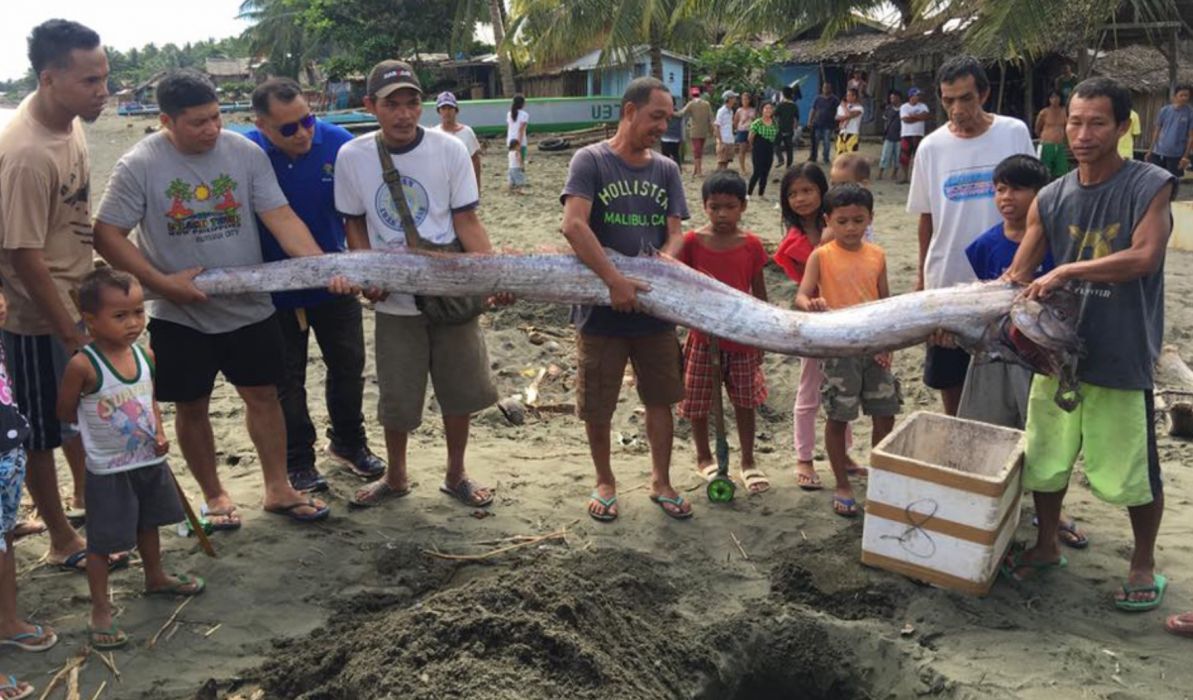The earthquake that jolted Surigao del Norte on Friday night jogged the memory of some people on social media, who were saying an incident two days prior could’ve served as a sign for the disaster that was about to strike.
On Wednesday, a 10-foot-long dead oarfish was caught by fishermen off the coast of Agusan del Norte.
To some, deep-sea creatures such as oarfish that end up in shallow water are a good predictor of earthquakes. How true that is remains very much a debate?
“It’s theoretically possible because when an earthquake occurs there can be a build-up of pressure in the rocks which can lead to electrostatic charges that cause electrically charged ions to be released into the water,” Rachel Grant, a lecturer in animal biology, said in a report posted on the Independent news website in October 2013.
In an undated Japan Times article, seismologist Kiyoshi Wadatsumi said that “deep-sea fish living near the sea bottom are more sensitive to the movements of active faults than those near the surface of the sea.”
To the untrained observer, it’s easy to jump to conclusions.
In 2010, the Telegraph reported that the appearance of dozens of oarfish in Japan was followed by destructive earthquakes in Chile and Haiti.
Stories proliferated too linking the devastating Japan tsunami of 2011 to incidents of oarfish beaching that prefaced the disaster.
According to Japanese folklore, oarfish are nature’s version of prophets of doom.
But not all beachings or strandings or instances of dead deep-sea creatures being found in shallow water are followed by earthquakes and that’s why scientists find such speculation fishy.
In the same Telegraph report, Hiroshi Tajihi, of the Kobe Earthquake Centre, said: “These are just old superstitions and there is no scientific relationship between these sightings and an earthquake.”
While the oarfish-earthquake connection holds water, more studies need to be made to confirm it as irrefutable scientific fact.
Some experts, such as Tajihi, believe this is an open-and-shut case. Others such as Grant seem to have a more open mind.
At the time of her interview with the Independent, Grant said she was putting together materials for research on the subject.
“We do know that there’s not an earthquake after every oarfish sighting, but we are going to see if there is an increased probability of oarfish being seen prior to an earthquake,” Grant said.
“It may be due to seismic activity or it may be due to other factors unconnected with earthquakes, such as infrasound caused by underwater activities, such as military submarines, or pollution.”
This story first appeared on ABS-CBN News Online and republished with permission.



